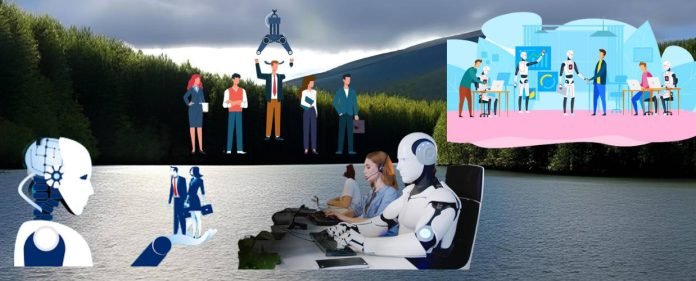In an era where technological advancement unfolds at an unprecedented pace and digital transformation shapes the contours of industries, skill automation has emerged as a transformative force redefining the landscape of work. This comprehensive exploration embarks on a journey to unearth the multifaceted facets of skill automation, tracing its historical roots, dissecting its profound implications for the modern workforce, analyzing the nuanced strategies that can facilitate a seamless transition, and daring to peer into a future where the convergence of human ingenuity and technological prowess reshapes the very fabric of productivity and progress.
Origins and Essence
The inception of skill automation can be traced to the synergy between cutting-edge technology, data analytics, and the dynamic realm of artificial intelligence. As automation technologies evolve, they encapsulate the power to replicate and execute tasks that have historically relied on human intervention. Skill automation, in its essence, encapsulates the process of harnessing technology, particularly robotics and machine learning, to replicate, enhance, and execute tasks that once fell under the purview of human expertise.
At its heart, skill automation is not merely a mechanism to streamline operations but a symphony redefining the intricate relationship between human skills and technological advancement. It marks a pivotal juncture where the boundaries between human and machine capabilities become blurred, prompting us to reassess the dynamics of work, productivity, and the very nature of skills that power our professional pursuits.
Implications for the Workforce
The ascendance of skill automation casts a far-reaching shadow over the workforce, giving rise to a series of transformative implications.
Skill Redefinition
Skill automation mandates a profound redefinition of traditional skill sets. Tasks that once thrived on repetition and routine are seamlessly automated, directing human workers toward skill sets characterized by creativity, critical thinking, emotional intelligence, and complex problem-solving.
Job Transformation
Automation does not translate into job elimination but rather a job transformation. As routine tasks are gradually delegated to automated systems, human workers are propelled toward roles that necessitate a deeper understanding of technology, a flair for collaboration with machines, and a fluid ability to adapt to evolving job profiles.
Upskilling and Reskillin
The surge of skill automation mandates an unwavering commitment to upskilling and reskilling. As the work landscape evolves, individuals must diligently invest in expanding and enhancing their knowledge and competencies to remain adaptable, valuable, and responsive to the ever-changing employment panorama.
Job Displacement and Socioeconomic Considerations
While skill automation unlocks unparalleled efficiencies, it carries the potential for job displacement in sectors heavily reliant on routine tasks. Organizations and societies alike must confront the potential socioeconomic consequences of such displacement, prioritizing measures that foster reemployment, skill transfer, and equitable transitions.
Strategies for Adapting to Skill Automation
Adapting to the transformative waves of skill automation necessitates a strategic orchestration of efforts across various domains.
Lifelong Learning as a Mantra
Embracing lifelong learning emerges as a mantra for individuals navigating the automation landscape. Remaining perpetually updated with the latest technological advancements, trends, and innovations empowers workers to navigate uncharted territory with poise and prowess.
Embrace and Collaborate with Technology
Rather than perceiving technology as a threat, individuals should embrace it as an enabler. Familiarity with automation tools, data analytics platforms, and digital collaboration ecosystems empowers employees to harness the capabilities of technology to optimize workflows and augment productivity.
Amplify Soft Skills
While automation may master routine tasks, the realm of soft skills assumes a newfound prominence. The cultivation of creativity, empathy, adaptability, and critical thinking resonates harmoniously with the automation landscape, enriching human-machine interactions and adding an irreplaceable human touch to operations.
Forge Human-Machine Partnerships
The future of work is characterized by dynamic human-machine partnerships. Workers need to cultivate the art of collaborating with automated systems, strategically leveraging the unique strengths of both humans and machines to achieve optimal outcomes.
Envisioning the Future of Skill Automation
As technology continues its relentless march forward, the future of skill automation unfolds with intriguing prospects.
An Augmented Workforce
The crux of skill automation lies in the augmentation of the workforce. A harmonious synergy between human workers and intelligent machines crystallizes, catalyzing a scenario where human ingenuity is amplified by automation, ushering in an era of heightened productivity and innovation.
Focus on Complex Tasks
Automation’s dominion extends to routine tasks, liberating human workers to focus on complex undertakings that necessitate creativity, decision-making, emotional intelligence, and nuanced problem-solving.
A Transformational Education Landscape
The realm of education feels the reverberations of skill automation. Educational institutions recalibrate their approach, accentuating interdisciplinary learning, critical thinking, and seamless technology integration to prepare students for a multifaceted job market.
The Ethical Impulse
The proliferation of automation beckons an ethical awakening. Organizations must champion responsible automation that upholds human dignity, equality, and safety principles, ensuring that technology is harnessed to benefit society.
Conclusion: A Harmonious Fusion of Human and Technological Ingenuity
Skill automation represents a transformational shift and a call for proactive adaptation from individuals, organizations, and societies. Instead of harboring apprehensions about job displacement, this seismic transformation should be embraced as a catalyst for augmenting human potential and redefining the essence of work. Through the cultivation of dynamic skill sets, an open embrace of technology, and a symbiotic partnership between humans and machines, a future unfolds where automation propels innovation, heightens productivity, and steers progress.
In this future, the synthesis of human skill and automation constructs an intricate tapestry where humans and machines coexist synergistically, forging a world that thrives on the fusion of skillful minds and technological marvels, resulting in a paradigm of sustainable growth, evolution, and boundless potential



